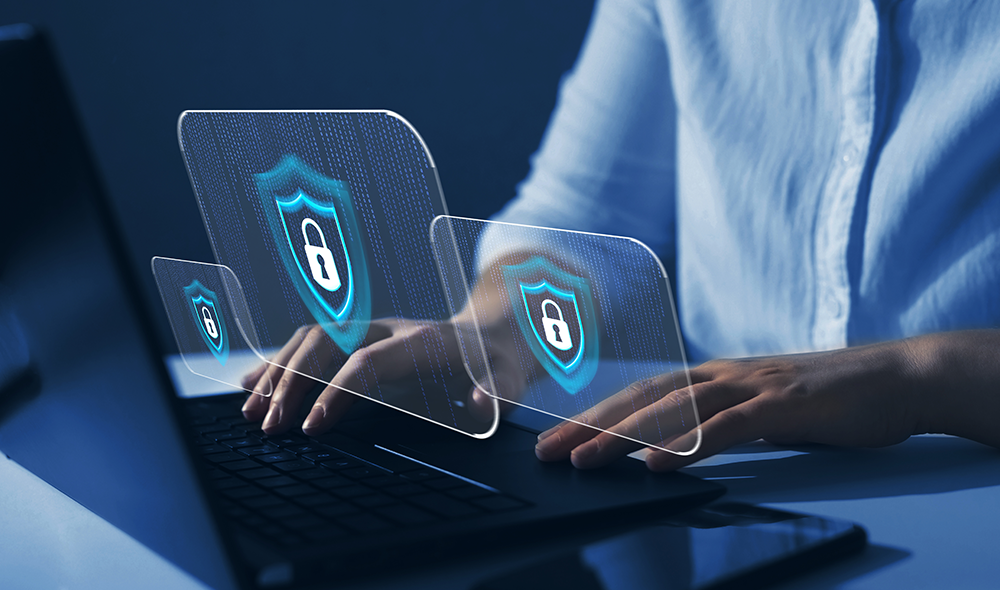Preventing data breaches isn’t just about avoiding lawsuits, it’s also key to ensuring your business is protecting its bottom line. According to IBM, the average cost of a data breach increased 2.6%, from $4.24 million in 2021 to $4.35 million in 2022. A data breach can mean losing information, experiencing reputational damage, and can cause delays and loss of productivity.
It’s clear that data breaches are one of the greatest threats to modern businesses, so stopping them in their tracks is essential. In this article, we’ll walk you through the 10 key best practices for stopping data breaches before they happen.
How To Craft a Secure Data Strategy
Data breaches can occur in many ways, so you must take a holistic approach to data security. When considering these best practices, remember that they will work best when utilized together.
1. Inventory Your Data and Sensitive Information
When it comes to data breaches, you can’t protect what you don’t know you have. This means a business has to inventory all of its data and sensitive information. Your company should catalog all of its information and continuously update your database to make sure you understand where your data is.
Inventorying the sensitive information you hold is especially important for companies that need to comply with HIPAA, GDPR and other regulations that govern sensitive data. By understanding where your data is, you’ll be in a better position to protect it and prevent it from being breached.
2. Establish Access Controls
Minimizing the surface area that can be subject to an attack is also key. One way to mitigate potential attacks is by limiting access to your business data. For example, before granting anyone access to sensitive data, consider their role and needs. Just because a manager runs an entire division does not mean they need access to sensitive data.
Create policies regarding elevated access levels, and be sure to audit them regularly. This way, you can remove employees as they quit, change roles, or become promoted.
3. Keep Software Up-to-Date
Security flaws, including zero-day vulnerabilities, are an ever-present threat to your data. Patching software and your networks is essential for your IT security team. Today, bad actors are using AI, neural networks, and sophisticated computer mesh topologies that can hunt for vulnerabilities independently. By leaving your software unpatched, you’re leaving your data and your stakeholders’ data at risk.
4. Secure Your Network Perimeter and Data Endpoints
One of the largest attack surfaces many companies possess is their network perimeter. Think of your network like a castle wall. Any loose stone could be a potential entry point for an attacker. By utilizing firewalls, access control, intrusion detection, and other tools, you can secure your perimeter and minimize the risk of bad actors gaining entry.
Securing your network perimeter can also mean minimizing your attack surface. Eliminate outside access to your network and implement end-to-end encryption.
Today, networks are more complex than ever. Frequently, people work remotely, and your network may have numerous endpoints bad actors can use to gain access to your systems. Securing endpoints using things like malware detection software is essential. Before, you could simply secure devices in your office, but now many devices are web-connected and may be taken home by users. Educating endpoint users and providing anti-malware and security software can help prevent unauthorized data access.
5. Monitor Users From Anywhere
Covid-19 changed many aspects of our world, and for better or worse, it hastened the adoption of remote work. As employees have shifted to working from home, it’s important to utilize software for keeping track of remote employees while they work. This type of software can help prevent unauthorized access and detect when employees are misusing sensitive data.
6. Enable a Zero-Trust Environment and Limit Lateral Movement
One excellent way to secure your endpoints, network, and data is to utilize a zero-trust environment. Zero-trust security models have become the standard in 21st-century data security.
In a zero-trust security environment, the three core tenets are key:
- Verify explicitly
- Use the least privilege access
- Assume a breach
By verifying explicitly, you authorize and authenticate access based on all available data points. This means utilizing specific IPs for access, geographic location, devices, etc. All of these, and others, should be utilized to verify authenticity. Least privileged access means users should be limited to accessing data specific to their role.
Finally, the assumption of a breach means implementing end-to-end encryption (including securing emails) and measuring data access and network levels with analytics. These practices together provide a safe and secure framework for minimizing the ability of attackers to move through your network
Another example of where end-to-end encryption is vital is to protect company financial data and assets. Utilizing bank accounts for storing your business assets that come with advanced security features is a no-brainer, but knowledge of the fact that banks and financial services continuously face evolving security threats means that you may need to look to other methods to keep your business assets safe as well.
One option is to consider investing certain company funds in cryptocurrency. Even though the crypto market is volatile, blockchain technology enables the encryption of crypto assets via cryptographic hashing. Furthermore, crypto wallets can offer further security with the use of private keys in denying unauthorized access. There’s a reason why crypto wallets are now in use by over 70 million people worldwide.
7. Improve Password Security
At a minimum, your company should embrace modern password policies. Password policies should embrace the following guidelines:
- Require a minimum password length
- Require employees utilize uppercase letters, lowercase letters, numbers, and special characters
- Require password changes regularly (between 60-90 days)
- Require multi-factor authentication
- Lock users out after a minimum number of password attempts
8. Leverage Security Experts
It may seem shocking, but sometimes the best security is outsourced. Many companies cannot build a dedicated security team due to financial constraints or organizational problems. In these cases, freelance security teams can provide you with the security you need to keep your data safe.
If you’re looking to enhance the security of your backend, you can expect to pay $60 an hour for an experienced developer. This can be significantly less than hiring someone on a salary for a similar job. In either case, these security experts can help ensure your data is safe.
9. Elevate Your Security Using Advanced Security Monitoring Tools
Another important way to secure your data is to utilize advanced security tools to monitor your infrastructure. Networks and information technology are far more sophisticated than ever before, which means that without the proper software to match, even a well-trained security expert can be at the mercy of hackers. Today, IT professionals leverage AI and monitoring tools that monitor network loads for variances to detect intrusions and notify security professionals when aberrations are detected.
10. Educate Stakeholders on Cybersecurity With Training
Finally, and most importantly, your cybersecurity strategy should include cybersecurity training for all stakeholders. Vendors, employees, or anyone else who may interact with sensitive data should all be trained. Many times, cybersecurity incidents can be avoided by mitigating unintentional mistakes. Proper training should include data usage guidelines, password policies, and alerting stakeholders to common threats.
Specifically, stakeholders should be made aware of social engineering, phishing, and other types of attacks that bad actors engage in. Consider utilizing special software to control which mobile devices can access your corporate resources. Stakeholders are often the front line of defense when it comes to mitigating cybersecurity threats.
Wrapping Up
Data breaches can happen to anyone, so remember, cybersecurity isn’t just about implementing one or some of these best practices. A well-implemented cybersecurity plan should use all of these policies, and more to ensure a strong defense against hackers seeking to steal your data.
Note: This blog article was written by a guest contributor for the purpose of offering a wider variety of content for our readers. The opinions expressed in this guest author article are solely those of the contributor and do not necessarily reflect those of GlobalSign.







